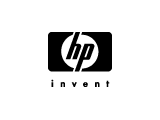08- K4CSY/KC4 - Barry Merrill, Expeditionsbericht (E-Mail an DokuFunk)
Located 125 miles SE of Guantanamo, acquired in the Guano Islands Act of 1856: "If an uninhabited island has guano, it is now US territory". Mined by the Baltimore and Navassa Phosphate Company in the late 1800's before Nitrogen became available, the crew killed their island manager, which led to a Supreme Court decision that Navassa Island was a ship at sea in maritime law for a mutiny. It's lighthouse, the first light for ships leaving the Panama Canal for Europe, originally acetylene fueled, is powered by batteries that need to be replaced regularly. In 1956, a secret Marine Base was established on Navassa for several weeks for the planned-but-aborted invasion of the Dominican Republic. In late 1970, Dick, W0EXD, found me on 20 meters and asked if I could help. He explained he was with NAMI, the Navy Aerospace Medical Institute in Pensacola, and they wanted to study the goats on Navassa Island. They ultimately confirmed that the DDT in the US had gotten into the 700 goats, from the fish that were eaten by the birds whose guano grew the grass that the goats ate. NAMI was fully funded and had the use of the NAS Pensacola RD-5 aircraft to transport the team of about a dozen and their gear, to NAS GTMO, but they had no way to get to and from Navassa; they planned to be on the island for a week. They would take radios, but did not plan to announce in advance nor operate as a DXPedition; they were there for serious science. I went to see the Admiral; I was not only on his staff, I ran his phone patches so I had ready access, and he had been to our quarters and seen the station, so he was predisposed to my desire to operate from Navassa, and gave me the green light to see what I could put together for NAMI. In less than a week, without a single meeting, I was able to make the arrangements. The primary task of GTMO in 1970 was to train the crew of new ships leaving the shipyard, and they would be at GTMO for six weeks. I found that the USS Detroit an LPH - Landing Platform Helocopter - would be in Guantanamo in Feb, and I got it's skipper to agree, along with the commodore at GTMO who ran the training, to embark the NAMI folks and gear, and I got the CO NAS GTMO to agree to give us one of his HH1K Huey Helos to ride on the Detroit for transport to/from the island. All other Ham DXPeditions have had to climb a 45 foot wire rope ladder to get on Navassa, from a Boston Whaler whose coxswain has a real challenge to hold the bot under the ladder and not be dashed into the rocks at Lulu Bay. Everything was set up, I was to join the group to do the serious DX operation, but the week before departure the NAMI Admiral cancelled my permission to join, citing hazardous chemicals as the reason. We then almost cancelled the entire show - if they were hazardous to me, weren't we putting GTMO at risk, but I had to accept. Everything went smooth getting them on the island, and we had regular 80 meter schedules several times a day for backup; the Detroit was scheduled to go to retrieve the team when the Admiral called to say he had just talked with the NAMI Admiral, and when my guy explained that I had done it all to make it happen, the NAMI Admiral invited me to board the Detroit and land on Navassa while they were departing, so I did get to climb the lighthouse and see the outhouses with a 500 foot hole.
In May, my Admiral called to ask if I still wanted to go to Navassa; he had contacted the Commandant Coast Guard Miami when he saw that the CG Buoy Tender USS Hollyhock was to come to both GTMO and Navassa in July 1971 to replace the batteries and tend the GTMO navigation aids. So I boarded with my card table and metal chair, a log book, my Heath SB-102 Transceiver, a 500 Watt AC gas generator and gas, a 14AVQ vertical antenna, 200 feet of wire for a long wire, and a breadboard LC antenna tuner for the long wire, for the overnight transit. I got to climb the ladder second, after a Coastie verified it was still solid and usable, and he swung out the boom and started hauling up the gear; I was on the air in an hour on July 22, 1971, but conditions are very poor, nothing at all on 10, 15 was spotty, but I did work many number of JAs early the next morning. During the day, a dozen crew were climbing up the long walk hauling the replacement batteries in special backpacks. The next morning three came ashore to climb again and check each cell temperature, but they were done by about 10am when I had to shut down after 700 QSOs. In 1971, to operate from Navassa, you had to have formal approval from both the Coast Guard and the FCC. When I sent the Coast Guard approval to the FCC, (and to ARRL DX desk!) the FCC responded that I was authorized to use K4CSY/KC as my callsign, which would have been treated as a new prefix, KC0. Rather than accept the FCC telegram, I replied all prior calls were KC4, and they responded that I was correct and should use /KC4.

